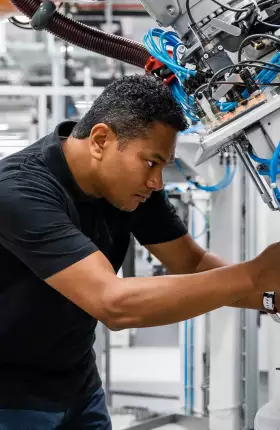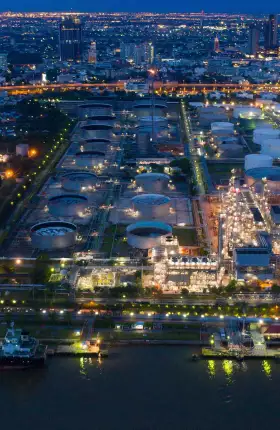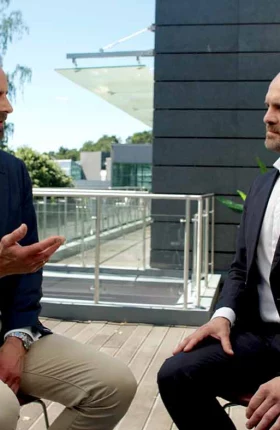By embedding agentic AI directly into daily workflows, one global industrial goods company unlocked agility, resilience, and a 2 percentage-point EBITDA boost in just two years.
Featured Insights
Artificial Intelligence, Digital, and Tech

Article
December 16, 2025

Article
June 13, 2024
Realizing value at scale requires a sharp focus on people and processes, even more so than on the technology backbone and algorithms.

Article
June 7, 2024
Recent technology developments, most notably rapid AI advances, are accelerating the convergence of IT and OT, unlocking troves of industrial data to improve productivity, quality, and availability.

Article
August 14, 2024
GenAI agents need to handle tasks responsibly, accurately, and swiftly in multiple languages, addressing potentially millions of specifications across hundreds of thousands of products.
Future of Process Industries
We offer a wealth of thought leadership, insights, and interviews to help you navigate the new reality in basic and industrial materials.
Climate Change and Sustainability

The BCG-WEF report explores how companies can gain competitive advantage by turning the net-zero challenge into a business opportunity.
Video
September 30, 2025
Extracting Metals Using Biotechnology
Forbion’s Alex Hoffmann, Fabien Koutchekian of Genomines, and Vuk Trifkovic of BCG X discuss genetically enhancing plants as an alternative, sustainable way to mining minerals and metals.

Article
March 28, 2025
Greater biodiversity is the key to healthier soil. And healthier soil is the key to a range of environmental and economic benefits. Here’s how to achieve them.

Article
November 7, 2024
Investment in sustainable agriculture will be key in order for farmers to keep up with rising global food demand.
Video
August 28, 2024
Leading the Charge in Aluminum Recycling and Circularity
BCG's, Øyvind Berle, and Hydro's, Bjørn Kjetil Mauritzen, discuss how Hydro is revolutionizing aluminum recycling and driving the sustainability agenda to create value for customers—and the planet.
Weekly Insights Subscription
Stay ahead with BCG insights on industrial goods
Cost Management and Transformation

Article
December 13, 2024
To design a COGS program that delivers sustainable savings, manufacturers should address five critical areas.

Article
August 7, 2024
Costs are threatening the ability of process companies to take advantage of both organic and inorganic growth opportunities because of expanding financial constraints.

Interview
July 22, 2024
BCG's Cory Kaplin explores the role that behavior, culture, and productivity play in helping companies achieve their cost and growth ambitions.
Industrial Goods on LinkedIn
How will industrial companies evolve? How will they redefine their business models in the coming years? Follow us on LinkedIn to find out.
What's Next

Article
July 16, 2025
As supply-demand imbalances and competition escalate, leading petrochemical companies are increasingly using M&As to improve performance and build resilience.
Video
The Future of Physical Intelligence
By combining robotics and AI to master 3D perception, workflow planning, and object manipulation, embodied AI could transform automation and manufacturing, says BCG’s Tilman Buchner.

Article
July 25, 2024
Integrating today’s advanced space services, including satellite communications and Earth observation, is taking industrials to new levels of growth and profitability.

Article
August 1, 2024
To succeed in the future, manufacturers must learn to deliver industrial solutions as digital services. This playbook describes the first steps involved in executing this complex strategy.
Explore more
Industry
Capability








